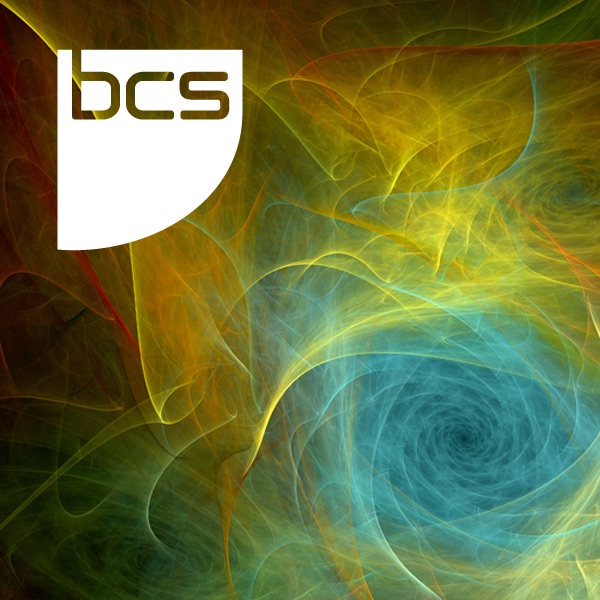Discover Digital Arts
Digital Arts

Digital Arts
Author: BCS, The Chartered Institute for IT
Subscribed: 2Played: 2Subscribe
Share
© BCS The Chartered Institute for IT
Description
Digital technology has not only changed the way we live and work, but also opened up new avenues and ways of expression for the arts. Dating back to the 1960s, digital or computer art has, and continues to, influence and transform traditional art forms such as painting, drawing, music and the performing arts, broadening the field to include new art forms such as digital installations, virtual reality or net art. This collection combines research into this varied and interesting field with discussions of current computer artwork.
61 Episodes
Reverse
Andy Lomas is a self-confessed code junky, saying, ‘I write it for my own pleasure.’ His Morphogenetic Creations on view earlier this year at the Los Angeles Center for Digital Art, has just been awarded one of the best artworks at the Artificial Intelligence and the Simulation of Behaviour (AISB) conference
Usman Haque, working under the art collective Umbrellium, creates his first artwork for an indoor space, Assemblance.
Gustav Metzger is an artist with a socially-engaged conscience who has become famous for his concepts of auto-destructive and auto-creative art.
George Mallen remembers his friend and colleague Alan Sutcliffe and his contributions to the computer arts.
James Faure Walker’s art is fundamentally about painting; the act of applying paint, whether it be digital or physical, to a surface.
This month we are considering a truly extraordinary use of the digital. Artist and creative entrepreneur Anna Hill is exploring how immersive art can communicate the human experience of space travel and, in her words, ‘bring space down to earth’.
Interactivity has become one of the defining characteristics of new media installation art and the use of the iPad allows a convenient, compact and user-friendly interface for a mobile audience.
Rob and Nick Carter’s art is a memento mori with a twist, because what appears initially as a painted panel in a wooden frame (of the kind favoured by Dutch 17th-C masters), upon sustained looking reveals a screen playing a looped animated image
Bizarre, strange mutated forms looming out of computer space; this artist is a gardener steering and evolving forms within a kind of virtual evolution.
Welcome to our annual end of year special - a celebration of work submitted by readers of this column, BCS & Computer Arts Society members.
The superb exhibition surveying 12 centuries of Chinese art currently on view at the Victoria & Albert Museum (to 19 Jan), showcases a culture that values continuity, tradition and repetition.
I had the great pleasure recently to spend the afternoon with this month’s artist Barbara Nessim, a pioneer in digital art and illustration; it was fascinating to hear first-hand about her career spanning six decades.
With an estimated 500 million internet users, the web has been called the most creative space for self-expression in China. In particular social networking and blogging on the internet is hugely prominent. What are the challenges facing Chinese artists who use this technology within the free market / communist state contradiction that is China?
Paul Coldwell, one of the finest printmakers working in the digital medium in Britain today, calls his ‘a layered practice’. Since 1995, Paul has been concerned with the question of how to integrate the computer without relinquishing the knowledge he has gained from twenty-plus years of traditional practice.
Definition of a glitch: A short-lived fault or malfunction in a system, a sudden disruption to the normal running of a network; the frustrating by-product of technology gone awry. Can a glitch ever be art?
The 55th International Art Exhibition, commonly known as the Venice Biennale, takes as its title this year The Encyclopaedic Palace - a theme full of the promise of universal inclusion.
The UK artist and Royal College of Art graduate Emily Allchurch creates complex photographic images which draw on art history to make contemporary re-creations of iconic works.
Jennifer Steinkamp’s beautiful tree moves as though blowing in the wind and transforms over time as the seasons change from spring in full, green leaf through autumn as the leaves fall, to winter with bare branches.
This month, to compliment the previous two discussions of Manfred Mohr and Ernest Edmonds in this column, we feature new work by another of the great pioneers of algorithmic art - Herbert Franke. Franke has called his practice, ‘an active challenge, to develop different methods for producing pictures.’
This month we investigate an interesting commission from the University of Dundee Museum Services who have been working on a £100,000 project funded by the Art Fund, to explore the influence of Sir D’Arcy Wentworth Thompson in the visual arts.





